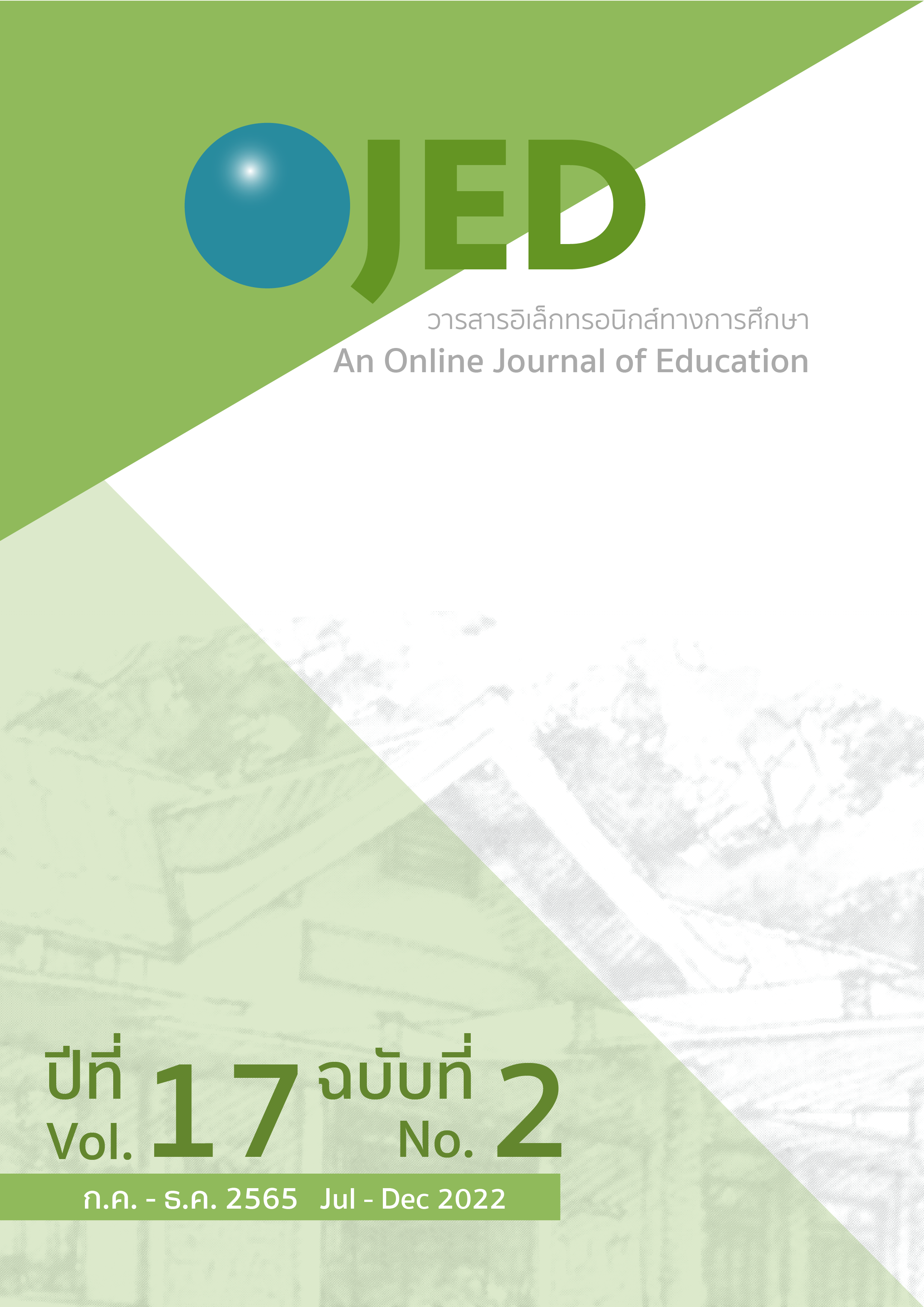Effects of a High-Intensity Interval Exercise Programme Using Rope Skipping on Muscular Strength of Undergraduate Students
DOI:
https://doi.org/10.14456/ojed.2022.52Keywords:
rope skipping, high-intensity interval exercise, muscular strengthAbstract
The purpose of the study was to examine the effects of a high-intensity interval exercise programme using rope skipping on the muscular strength in undergraduate female students. Twenty-nine undergraduate students participating in the study were divided into three groups: 1) students in a high-intensity interval exercise programme using rope skipping (HIIE) (n=9), 2) students in a moderate-intensity continuous exercise programme using rope skipping (MICE) (n=10), and 3) a control group (no intervention; CONT) (n=10). The experimental groups were asked to perform an exercise for three and five sessions per week, respectively, for 8 weeks. The data were then analysed by comparing the difference of scores by analysis of covariance (ANCOVA) and t-test. The research findings were as follows: 1) the upper-muscular strength in both experimental groups was lower than the baseline (P<.05), 2) the knowledge in both experimental groups was higher than the baseline (P<.05), and 3) the self-efficacy scores between experimental groups were not different. In conclusion, neither the HIIE nor MICE programme using rope skipping improved upper-muscular strength, but they improved the participants’ knowledge of exercise.
References
American College of Sports Medicine. (2020). Staying Active During the Coronavirus Pandemic. Exercise is Medicine. https://www.exerciseismedicine.org/assets/page_documents/EIM_Rx%20for%20Health_%20Staying%20Active%20During%20Coronavirus%20Pandemic.pdf
Amini, H., Habibi, S., Islamoglu, A. H., Isanejad, E., Uz, C., & Daniyari, H. (2021). COVID-19 pandemic-induced physical inactivity: The necessity of updating the global action plan on physical activity 2018-2030. Environmental Health and Preventive Medicine, 26(1), 32. https://doi.org/10.1186/s12199-021-00955-z
Azuma, A. (2016). Effects of different types of ropes on jump cycle while skipping. Research reports of National Institute of Technology, Fukui College. Natural Science and Engineering, 49, 187-194.
Bandura, A. (1977). Self-efficacy: toward a unifying theory of behavioral change. Psychological Review, 84(2), 191.
Birdwood, G. F. B. (1996). Understanding osteoporosis and its treatment: A guide for physicians and their patients. Parthenon Publishing.
Cohen, J. (1992). Statistical power analysis. Current Directions in Psychological Science, 1(3), 98-101.
Cohen, P., West, S. G., & Aiken, L. S. (2014). Applied multiple regression/correlation analysis for the behavioral sciences. Psychology press.
Fletcher, J. S., & Banasik, J. L. (2001). Exercise self-efficacy. Clinical Excellence for Nurse Practitioners: The International Journal of NPACE, 5(3), 134-143.
Ha, A. S., & Ng, J. Y. Y. (2017). Rope skipping increases bone mineral density at calcanei of pubertal girls in Hong Kong: A quasi-experimental investigation. PLoS One, 12(12), e0189085. https://doi.org/10.1371/journal.pone.0189085
Ha, A. S., Lonsdale, C., Ng, J. Y., & Lubans, D. R. (2014). A school-based rope skipping intervention for adolescents in Hong Kong: Protocol of a matched-pair cluster randomized controlled trial. BMC Public Health, 14, 535. https://doi.org/10.1186/1471-2458-14-535
Kilpatrick, M. W., Jung, M. E., & Little, J. P. (2014). High-intensity interval training: A review of physiological and psychological responses. ACSM's Health & Fitness Journal, 18(5), 11-16.
Martin, M. R., & Sharpe, T. L. (2011). Analysis of three exercise adherence interventions on self-efficacy and goal orientation.
Poon, E. T., Sheridan, S., Chung, A. P., & Wong, S. H. (2018). Age-specific affective responses and self-efficacy to acute high-intensity interval training and continuous exercise in insufficiently active young and middle-aged men. Journal of Exercise Science & Fitness, 16(3), 106-111. https://doi.org/10.1016/j.jesf.2018.09.002
Stockwell, S., Trott, M., Tully, M., Shin, J., Barnett, Y., Butler, L., McDermott, D., Schuch, F., & Smith, L. (2021). Changes in physical activity and sedentary behaviours from before to during the COVID-19 pandemic lockdown: A systematic review. BMJ Open Sport & Exercise Medicine, 7(1), e000960. https://doi.org/10.1136/bmjsem-2020-000960
Tritter, A., Fitzgeorge, L., Cramp, A., Valiulis, P., & Prapavessis, H. (2013). Self-efficacy and affect responses to sprint interval training. Psychology of Sport and Exercise, 14(6), 886-890.
Downloads
Published
How to Cite
Issue
Section
License
Copyright (c) 2022 An Online Journal of Education

This work is licensed under a Creative Commons Attribution-NonCommercial-NoDerivatives 4.0 International License.




